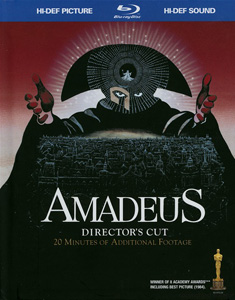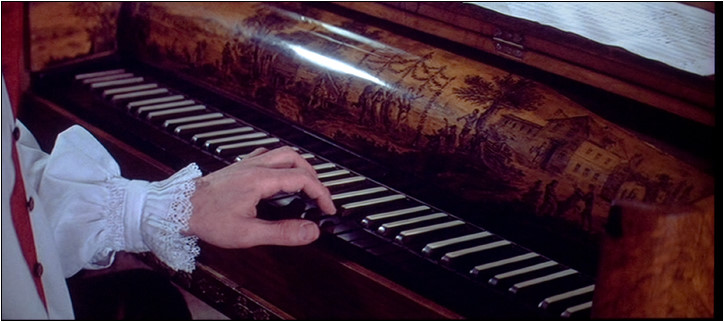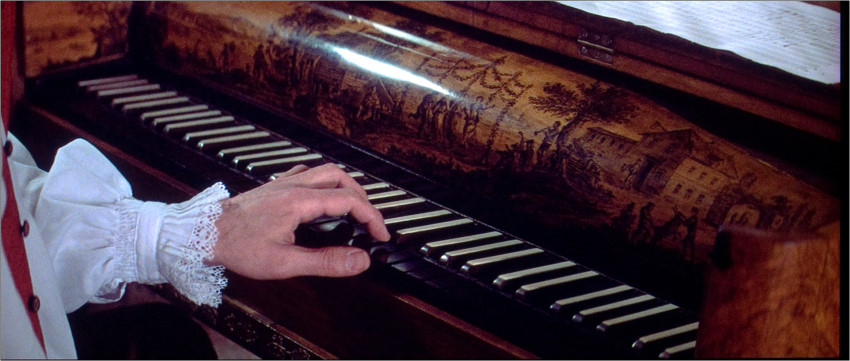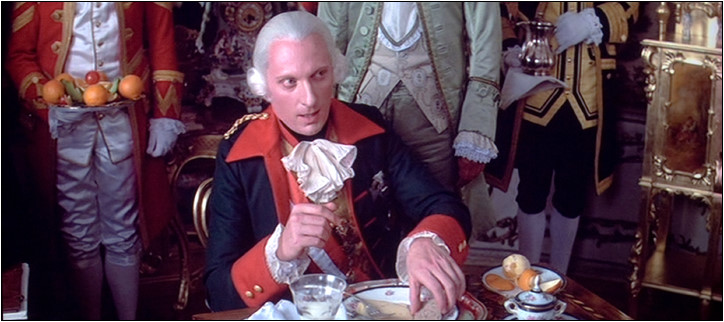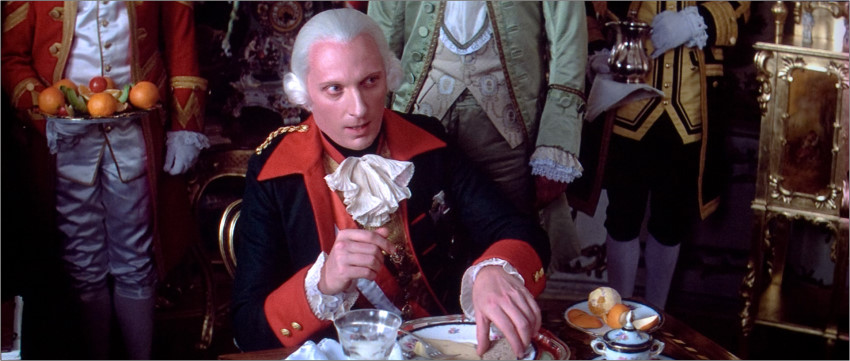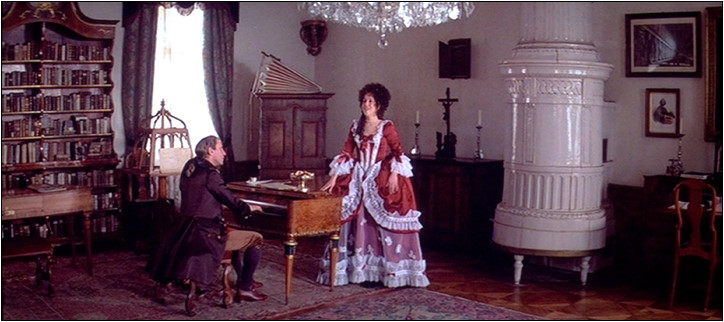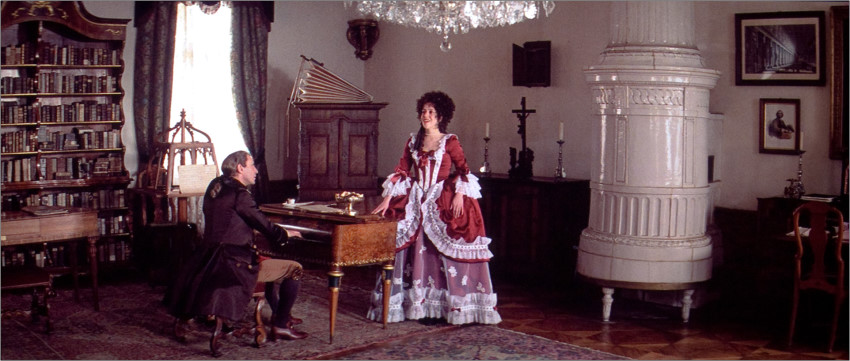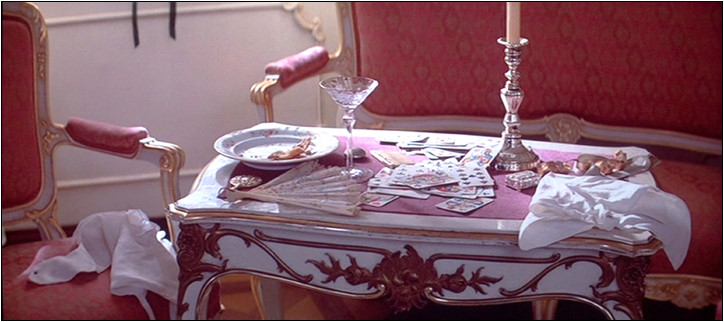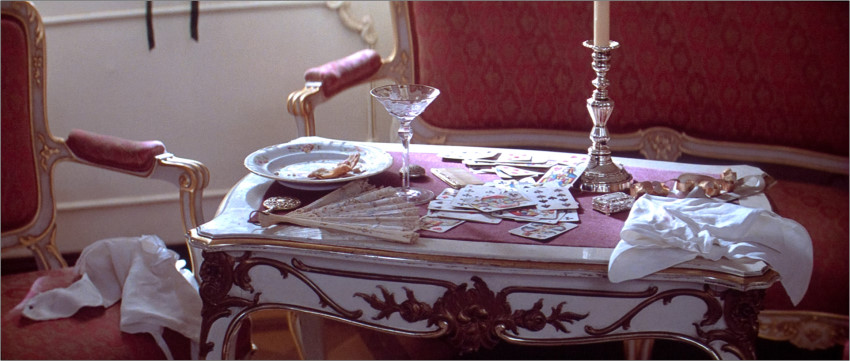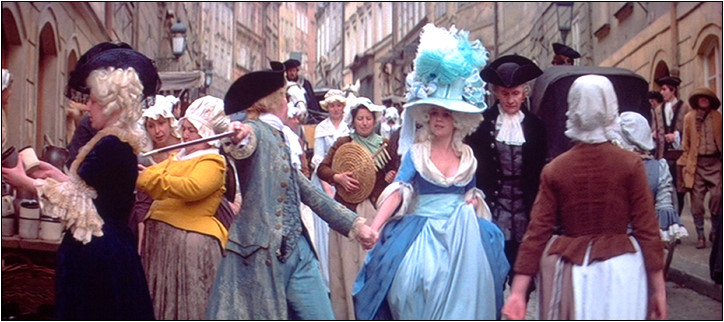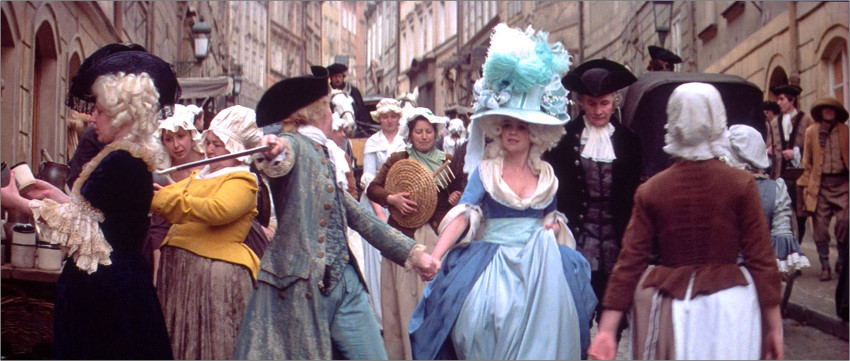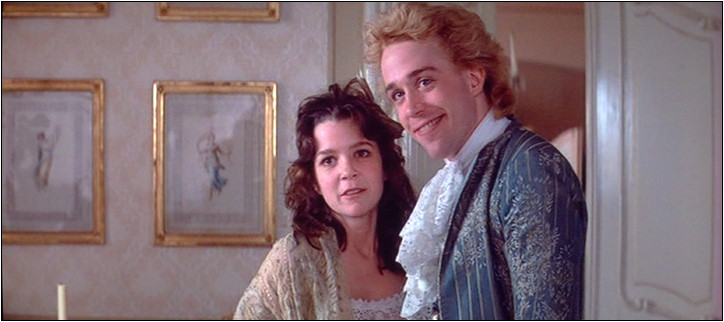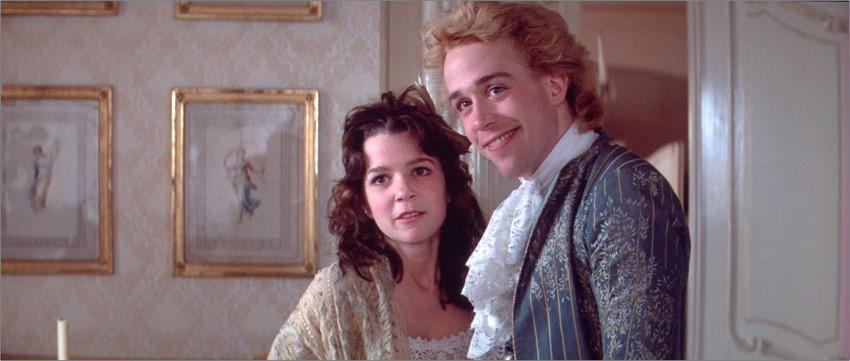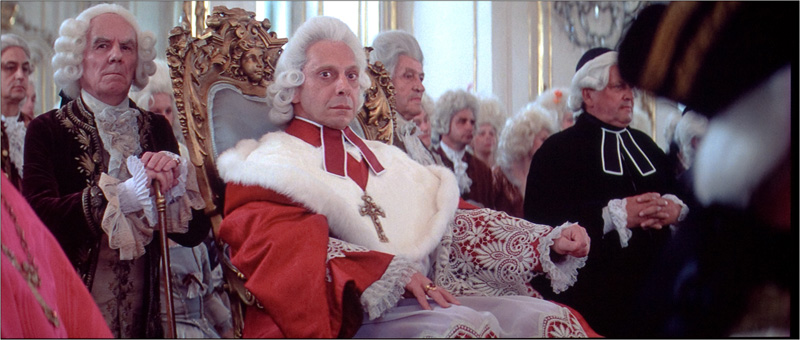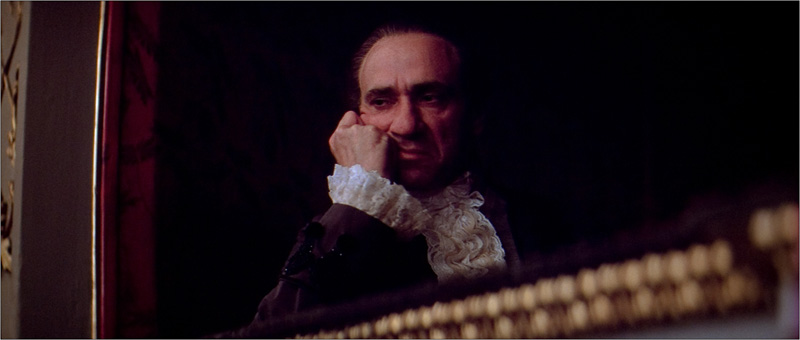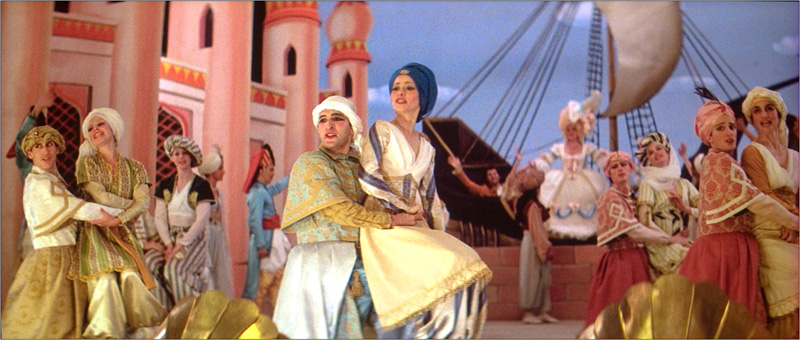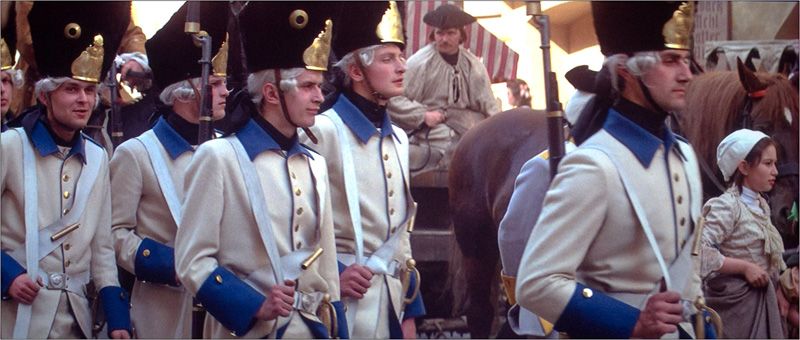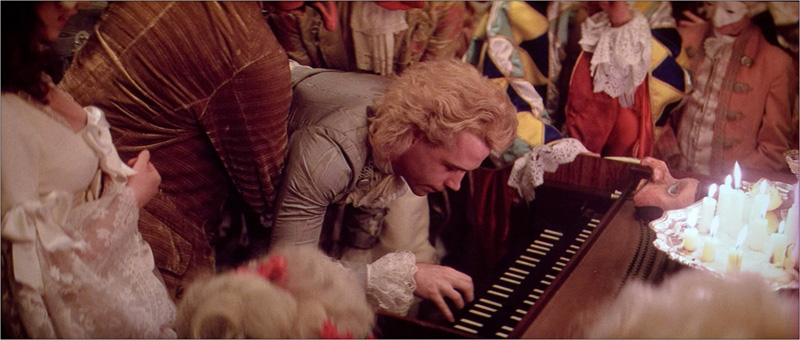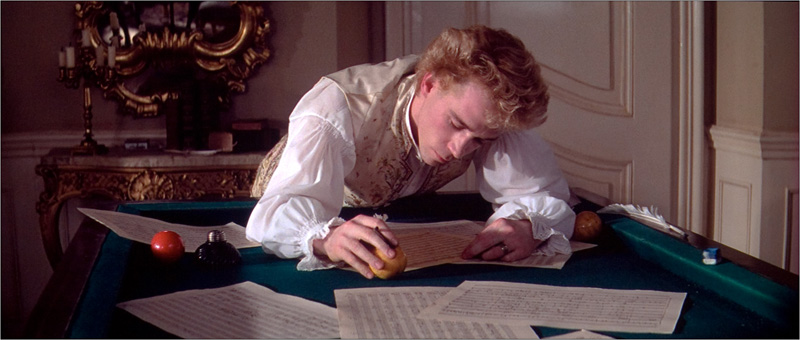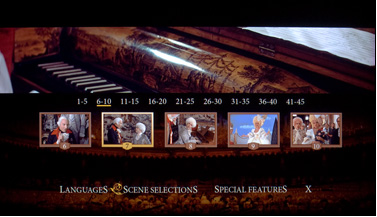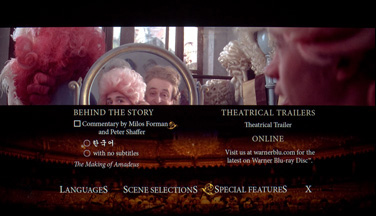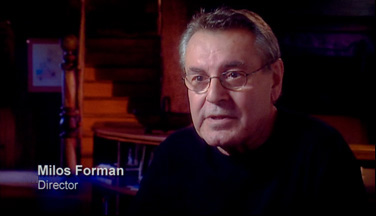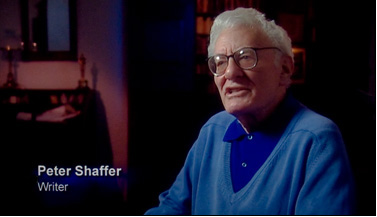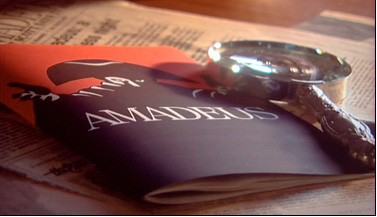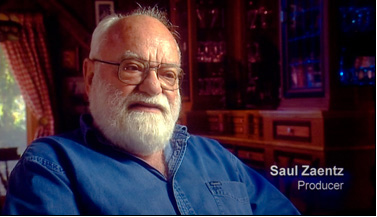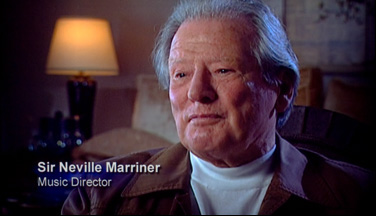Review by Leonard Norwitz
Studio:
Theatrical: Saul Zaentz
Blu-ray: Warner Home Video
Disc:
Region: All
Runtime: 180 min
Chapters: 45
Size: 50 GB
Case: Warner Blu-ray Book (2-disc)
Release date: February 10, 2009
Video:
Aspect ratio: 2.40:1
Resolution: 1080p
Video codec: VC-1
Audio:
English Dolby TrueHD 5.1; English, Spanish, French, German &
Italian Dolby Digital 5.1.
Subtitles:
English, French, Spanish, Danish, Dutch, Finnish, German,
Italian, Norwegian, Polish, Portuguese & Korean.
Extras:
• Audio Commentary by Director Milos Forman and Writer Peter
Shaffer
• Documentary: The Making of Amadeus (60 min.)
• Theatrical Trailer
• Bonus CD Disc: More Mozart (included in book)
• Digital Copy Disc (loose)
The Film:
9
A great deal has been written, sane and hysterical, about
Peter Shaffer's play and, by extension, the movie, so I
shall be brief: Amadeus is not about the life of Mozart. It
is not about the death of Mozart. It exalts Mozart's music,
but does not mean to instruct as to how its composition
actually came about, nor when, nor where – at least not with
any consistency.
The play isn't really about Mozart. It is about Salieri. Not
the actual composer, but the idea of one such he could have
been – a conservative, but very popular hack who might have
realized the facile genius that was Mozart. Shaffer proposes
a Salieri who believes and accepts that what gift he
possesses has been conferred by God. In exchange for his
talent and popularity at court,
Salieri lives the life of a virtuous man. We have the
impression that he would have preferred not have to pay the
price.
And then he meets Mozart whom Forman paints in broad strokes
as an escapee from Animal House. He is a foul-mouthed,
egotistical, debaucher. The very idea that his middle name
should be "Amadeus" – "beloved of God" – so offends
Salieri's notions about the moral order of the universe
that, like Cain, he suffers a most profound grief for his
God who has apparently forsaken him. How could God have
granted this insect the gift of the angels! Salieri asks.
Since Salieri cannot confront God directly with his rage, he
resolves to return the offense by taking away everything
that Mozart holds dear.
Image:
5/7
Transferred from the same master that created Warner's
Director's Cut DVD, differences are subtle, but apparent:
The DVD is flatter, darker in the darker scenes, brighter in
the bright scenes; the DVD is consistently redder, to the
point I think it would be fair to deem it a color cast, and
it also reveals slightly more information on the edges. The
Blu-ray is a little cleaner than the latest DVD, especially
noticeable on the first frame on the far side of a cut.
Neither image is very highly resolved. A certain blotchy
quality is occasionally revealed on faces. Grain in varying
degrees is present, as expected and hoped, but the image is
soft to the point one feels the effects of DNR as well as
its attempts at reversing its effects: waxy faces and
artificial sharpening.
DVD
TOP vs. Blu-ray
BOTTOM
DVD TOP vs.
Blu-ray
BOTTOM
DVD TOP vs.
Blu-ray
BOTTOM
DVD TOP vs.
Blu-ray
BOTTOM
DVD TOP vs.
Blu-ray
BOTTOM
DVD TOP
vs. Blu-ray
BOTTOM
More Blu-ray grabs
Audio & Music:
6/10
Alas, subtle as the improvement in image is of the Blu-ray
over the DVD, I would not fault anyone who would be
hard-pressed to hear the difference between its compressed
and uncompressed audio tracks. I confess this came as
something of a surprise for where but in the complex
symphonies and operas would we be granted the realization of
what high-resolution audio is all about. It's not that the
audio is therefore insufferable, it's just that it is not
particularly elevated. Part of the problem may reside simply
in the mixing of the original music tracks into a surround
matrix where focus and dynamic nuance is likely to be
compromised. But this alone cannot account for the lack of
difference. Even the dialogue is not all that much more
clarified in Dolby TrueHD.
Operations:
4
Not much to go awry here – except that it does. I don't much
appreciate loose inserts that describe the contents of a
disc that has a permanent place in the box. The bonus CD is
part of the 2-disc book, yet the index of its contents is
easily lost. On the other hand, I only wish that the book
form of presentation, as Warner offers here, was standard
operating procedure for Blu-ray discs, as I cannot abide the
cheap plastic cases that the great majority of international
Blu-rays have had the bad luck to find themselves.
Extras:
6
The extra features for this Blu-ray disc are exactly the
same as for Warner's 2002 two-disc Special Edition
Director's Cut DVD, with the addition of a bonus disc of
nearly an hour of Mozart recorded by Sir Neville Marriner
and a Windows Media digital copy disc. The hour long
documentary on the making of the film, made for the two disc
Director's Cut DVD with interviews of Forman, Saentz,
Shaffer and others and transferred in watchable standard
definition, is very worthwhile, as is the feature length
audio commentary, even though it duplicates much of what's
on the doc.
Bottom line:
7
While I would have preferred a true and faithful high
definition transfer, this new Blu-ray edition from Warner is
the best home video available. Given the subtle improvement,
if you are on the fence about an upgrade I recommend renting
first. If you've never seen this movie, then there is no
excuse not to buy it and watch it. And then watch it again.
Leonard Norwitz
February 15th, 2009
![]()
![]()

![]()
![]()
![]()
![]()

![]()
![]()


